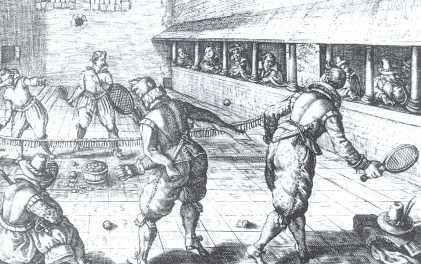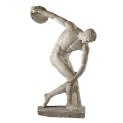RETURN
DOWNLOAD PDF
BACKGROUND - REAL TENNIS IN PRE-INDUSTRIAL TIMES

By the 14th century, Tennis had found its way to England where both Henry VII and Henry VIII apparently became keen players and influenced the building of courts up and down the country. Supposedly, Henry VIII himself invented the 'service' - his servants used to throw the ball up in the air for him because he was too fat to do it himself.
Tennis was seen as a very exclusive sport – It needed expensive equipment & facilities, required an understanding of complex rules and social etiquette. Laws were passed which restricted tennis to noblemen & royalty. As result, the privileged status of the elite was retained.
Popular recreation for the working classes could be cruel and violent (deaths were recorded in mob football games), but Real Tennis played by the Upper Classes was genteel and sophisticated.
In contrast to working class sports that were played in simple, natural locations, Real tennis was an elite sport played in purpose-built facilities, built in the grounds of large estates owned by very rich members of the nobility (aristocracy).
Real tennis was available only to those who had access to facilities and who had the high class social position: it certainly wasn’t played locally by people who lived nearby! In the period when Henry Vlll made the game fashionable, members of his court eager to please the king made sure that they built facilities on their estates so that they would please the king should he visit. A court was very expensive to build: Henry VIII had one built at Hampton Court: there are 26 courts still in existence in England, one being at Hatfield House.
Real Tennis courts had spectator galleries so that people could watch, socialise and bet on the outcome.
The rules and equipment of real tennis were sophisticated and relatively high tech, which again contributed to the game being exclusive – most of the working class population were illiterate and had no education, so the culture of the game would have been alien to them: peasants probably wouldn’t have dreamt of having the opportunity to play. In the same way, in modern times, not many people in society think about playing polo which is a exclusive modern sport, and few people in lower socio-economic groups have the aspiration or money to play golf.
The upper classes had the time and money to play Real Tennis (unlike the working classes): it also demanded training and a high level of skill, whereas working class ‘mob’ sports tended to rely on force and there was often an element of brutality.


